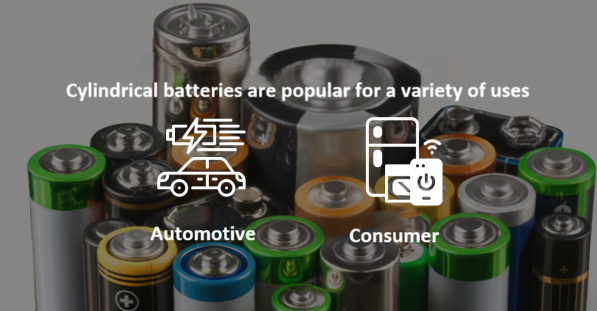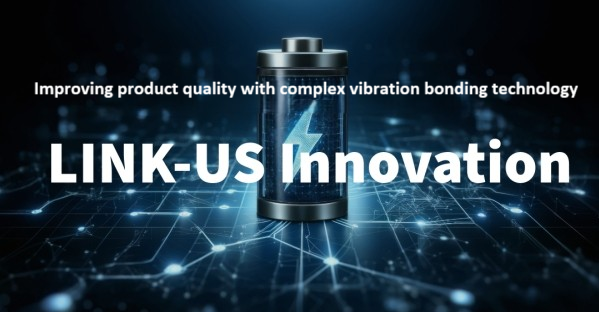LINK-US Lab~Part6
Innovative bonding technology improves the performance of lithium-ion batteries!
This is the 6th parts of LINK-US Lab!
Here are some examples of how Ultrasonic Complex Vibration Bonding technology has contributed to improving the quality of the product.
Conventional battery manufacturing technologies have faced challenges due to barriers in bonding technology.
Current bonding Issues
- Inability to utilize optimal raw materials
- Impurities generated during bonding
- Safety of final product
We would like to introduce an example of how ultrasonic complex vibration bonding technology has enabled us to use the most suitable raw materials.

Lithium-ion batteries: Lead-tab bonding on the bottom of cylindrical cans
The cylindrical batteries that we see in our daily lives are classified under the name "cylindrical cans”.
These cylindrical batteries include alkaline batteries, manganese batteries, and lithium-ion batteries.
Among these, lithium-ion batteries are now widely produced worldwide for use in electric vehicles and consumer electronics.
In the production process of this cylindrical can-type lithium-ion battery, there are many bonding processes.
In the bonding process for the bottom of the can, our technology enables bonding using revolutionary raw materials.
Click here for more information about LINK-US ultrasonic bonding.
Currently, they are bonded by using the following materials mainly.
Current raw material composition
- Can body Iron (Fe/Ni plating)
- Lead tab Copper-nickel clad material (Ni-Cu-Ni)
The copper-nickel clad material used for lead tabs is a material made by laminating different types of metals and has the characteristics of copper for low electrical resistance and nickel for easy spot welding.
This material is used because it is easy to weld by resistance welding. On the other hand, it is one of the expensive materials because it is processed from copper alone.
Originally, we wanted to use copper material for the bonding, but this product design was postponed due to the issue of not being able to bond.
Raw material composition in our ultrasonic complex vibration bonding technology
- Can body Iron (Fe/Ni plating)
- Lead tab Copper (Cu)
Ultrasonic complex vibration bonding technology enables high power battery production with low electrical resistance of copper.
In addition, it has received high praise for its ability to use inexpensive raw materials.
The energy generated during bonding does not generate heat, which contributes to high energy efficiency and reduced power consumption.
LINK-US proposes solutions to such bonding problems using ultrasonic complex vibration bonding technology, as well as cost reduction simulations by introducing equipment.
Please contact us first!
Please contact our team of experts for your ultrasonic bonding needs.
We will provide you with the best solution to solve your problem.
Contact us
LINK-US Lab will continue to lead the evolution of ultrasonic bonding technology and contribute to society.


